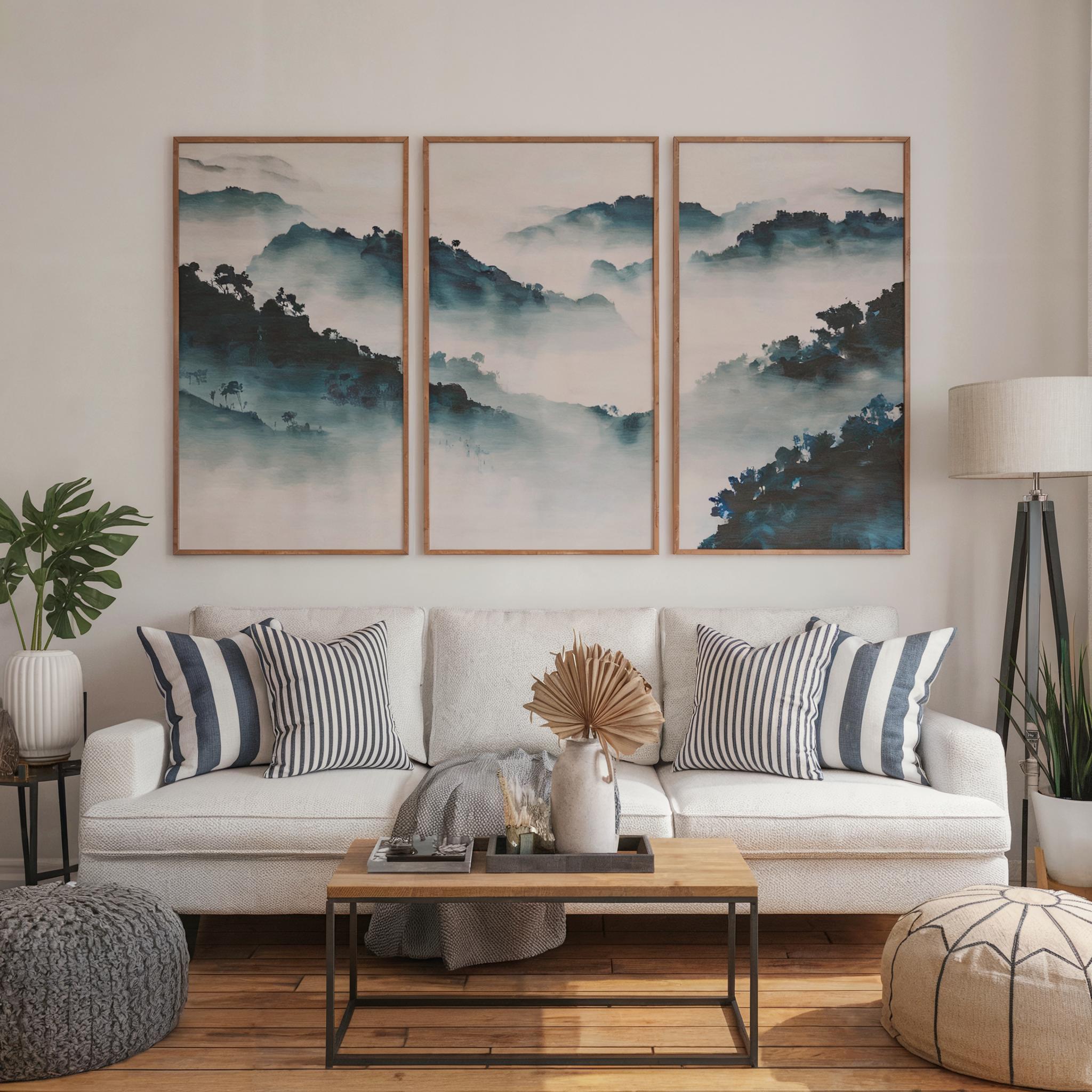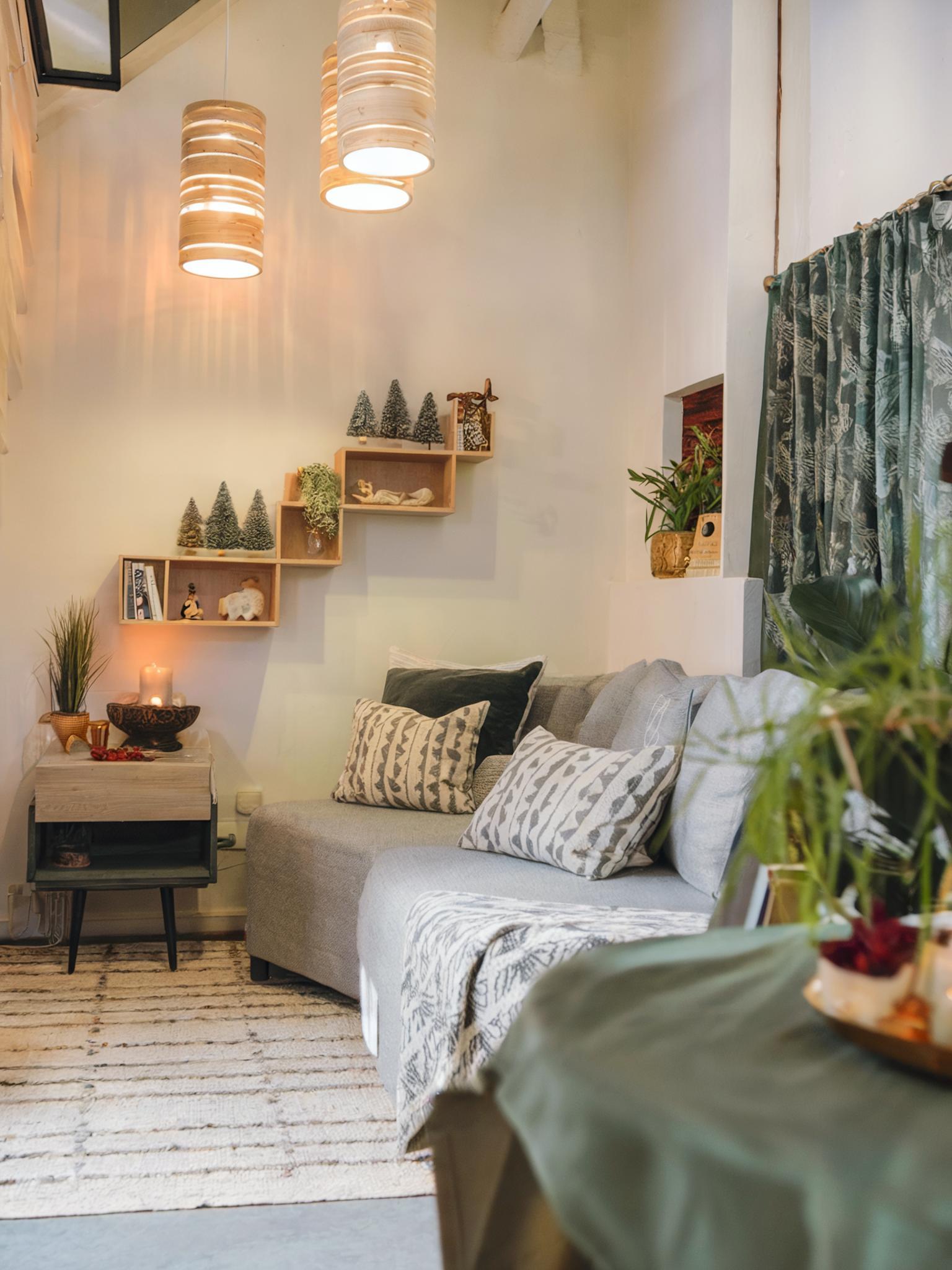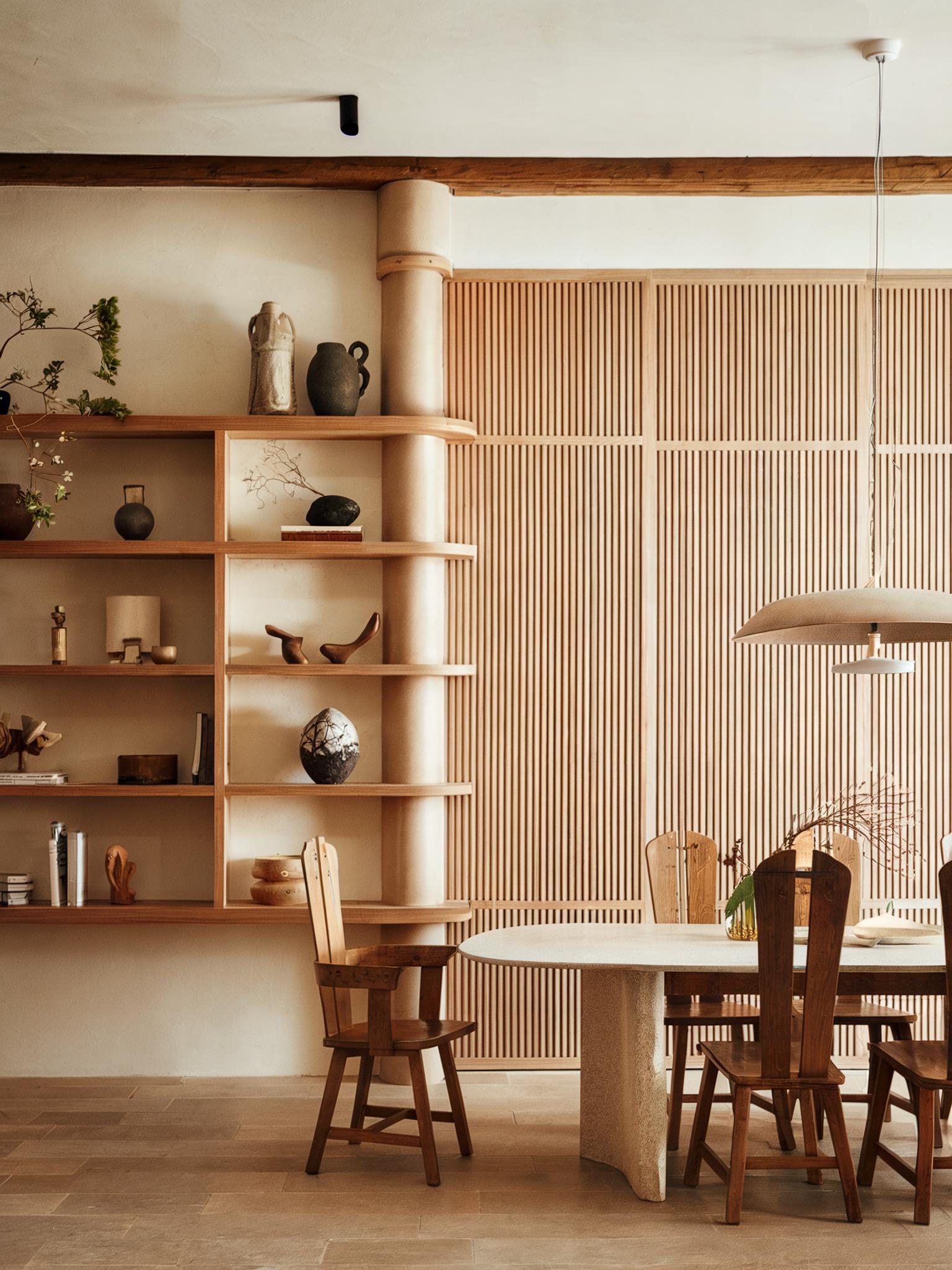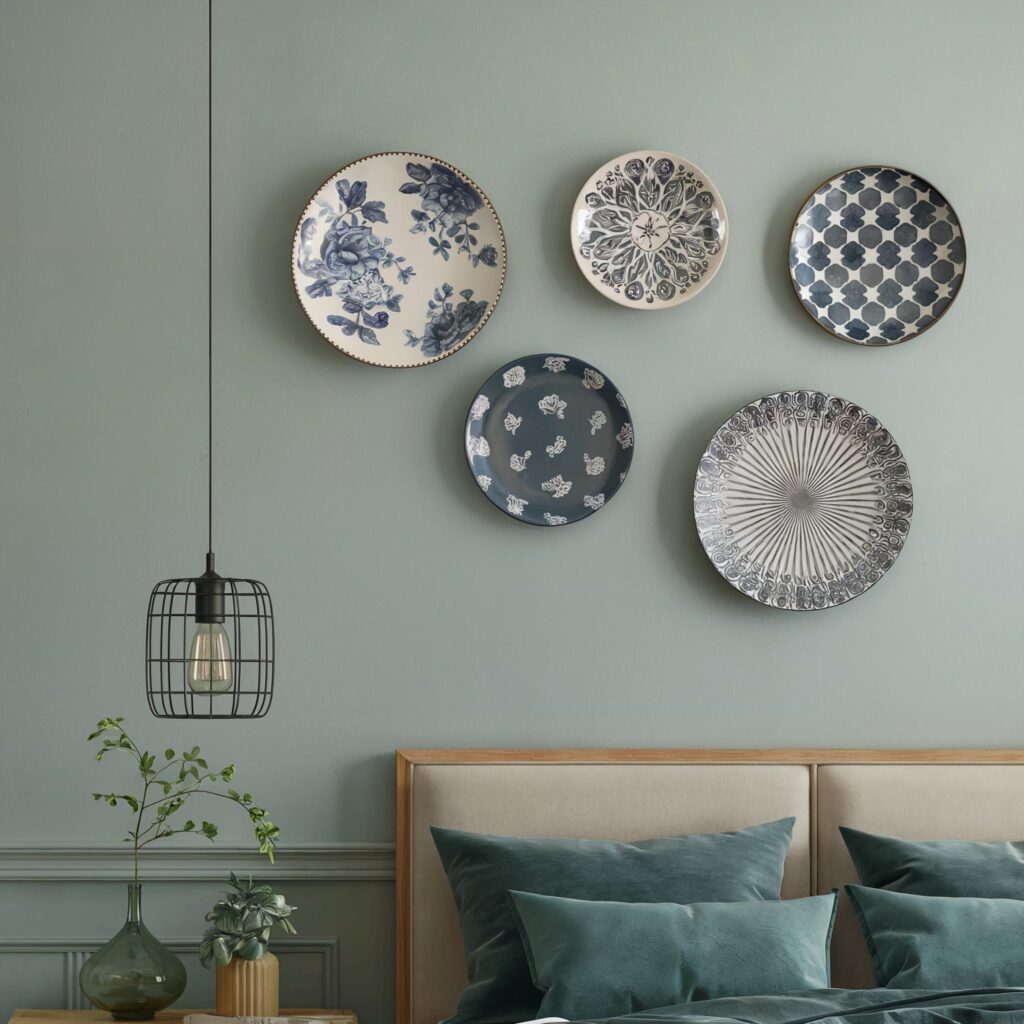7 Wall Ideas For Japandi Style Living Room: Transform Your Space
Creating a Japandi style living room means blending the calm elegance of Japanese design with the cozy simplicity of Scandinavian aesthetics. This hybrid style helps to make your space both beautiful and peaceful, balancing form and function.

Incorporating Japandi wall ideas into your home can enhance your living room’s style and bring a sense of harmony and order. By choosing the right elements, you can achieve a look that feels open, welcoming, and effortlessly modern. Whether you prefer a minimalist approach or subtle touches that reflect nature, Japandi design offers various ways to make your space inviting and serene.
Get the Fail-Safe Paint Color Playbook (Free PDF)
36 proven colors • 8 ready palettes • trim & sheen guide • printable testing cards.
1. Shoji Screens

Shoji screens add a touch of elegance to your Japandi living room. These sliding doors are made from translucent paper and thin wood frames. They let in soft, diffused light, creating a warm and inviting atmosphere.
Incorporate shoji screens as room dividers to allow flexibility in your space. They’re great for sectioning off areas without making the room feel closed in.
They also bring a unique blend of Japanese and Scandinavian design elements. With their minimalistic and natural look, shoji screens fit perfectly into the Japandi style.
These screens are not just practical; they enhance the overall aesthetic. They can act as a focal point, drawing attention to their simple yet sophisticated design. Consider pairing shoji screens with low furniture and neutral tones for a harmonious style.
Think about using shoji screens around windows to soften the incoming light. This will enhance the peaceful ambiance in your living room.
2. Washi Paper Art

Washi paper art can bring a unique touch to your Japandi living room. This traditional Japanese paper is known for its beauty and strength.
You can use washi paper to create lovely wall art pieces. Look for designs that feature simple lines or gentle shapes to match the Japandi aesthetic. Bold patterns can also add personality without overwhelming the space.
Consider framing a few pieces of washi paper art for a neat display. You can either use different patterns or stick to a single theme. Position these frames behind your sofa or above a piece of furniture for a balanced look.
Washi paper art is a great way to add color and texture to your walls while staying true to the Japandi style.
3. Minimalist Wall Shelves

When bringing Japandi style into your living room, minimalist wall shelves can play a key role. They offer a perfect blend of form and function, keeping the space clutter-free while showcasing your favorite items. Look for shelves with clean, simple lines to stay true to the Japandi aesthetic.
Choose materials like natural wood or bamboo for a warm and inviting feel. These materials add a touch of nature and help maintain the calming vibe of the space. Floating shelves are a great choice because they create a sense of openness.
Get the Fail-Safe Paint Color Playbook (Free PDF)
36 proven colors • 8 ready palettes • trim & sheen guide • printable testing cards.
Use the shelves to display a few well-chosen pieces like ceramics, small plants, or art prints. It’s important to avoid overloading the shelves. Keeping things simple helps maintain the serene and clutter-free atmosphere that defines Japandi style.
If you like a little variety, try ladder-style shelves. These can add visual interest while keeping within the design rules of minimalism. By being thoughtful about what you display, you ensure everything looks intentional and harmonious with the rest of your living room.
4. Natural Wood Paneling

Natural wood paneling is a fantastic way to add warmth and texture to your Japandi style living room. This design choice combines the simplicity of Scandinavian decor with the elegance of Japanese aesthetics. The result is an inviting space that feels both modern and cozy.
Using a variety of wood shades can create visual depth in your room. Consider mixing lighter wood with darker accents to maintain interest without overwhelming the simplicity. A medium-toned wooden wall might be paired with dark wood furniture or flooring to keep things balanced.
One option is to add wood panels to a feature wall. This creates a focal point without needing much decoration, as the wood brings its own charm. Behind a sofa or along one side of the room, these panels can change the entire vibe of your space.
Make sure to choose wood finishes that highlight the natural grain. This maintains a connection to nature, which is a core element of Japandi design. The textures and patterns in the wood can make your living room feel grounded and harmonious.
Let natural light interact with the wooden surfaces. The interplay of shadow and light can enhance the beauty of the wood, drawing attention to its natural features.
5. Rattan Wall Hangings

Get the Fail-Safe Paint Color Playbook (Free PDF)
36 proven colors • 8 ready palettes • trim & sheen guide • printable testing cards.
Adding rattan wall hangings to your Japandi style living room gives it warmth and texture. Rattan is a natural material that pairs well with the simplicity and elegance of Japandi design. Its light color and airy structure complement neutral walls beautifully.
Hangings made from rattan can come in different shapes and styles. You might choose a round rattan piece or a collection of smaller hangings. These can create interesting patterns and add visual interest to your space.
Get the Fail-Safe Paint Color Playbook (Free PDF)
36 proven colors • 8 ready palettes • trim & sheen guide • printable testing cards.
Rattan wall hangings are not just decorative; they also connect indoor spaces with nature. This connection is an important part of Japandi style, which values simplicity and a peaceful, calming atmosphere. So, when you add rattan, you’re enhancing the natural vibe that Japandi promotes.
6. Muted Tone Paintings

Muted tone paintings are perfect for a Japandi-style living room. They blend soft colors with a touch of elegance. These artworks don’t overpower the room, letting the serenity and simplicity shine through.
When choosing paintings, look for soft colors like beige, light gray, or pale blues. These shades keep the space calm and consistent with Japandi’s minimalist vibe. Abstract designs can add interest without being too bold.
It’s essential to match the paintings with the rest of your decor. Keep a cohesive look by selecting frames that complement the natural tones in the room. Wood or simple black frames can add a touch of warmth while maintaining simplicity.
Hanging your paintings at eye level will create a balanced look. You might also want to experiment with arranging multiple smaller paintings to form a unique focal point.
7. Ceramic Wall Plates

Ceramic wall plates are a great choice for adding a special touch to your Japandi living room. They blend Japanese and Scandinavian aesthetics beautifully, offering simplicity and elegance. These plates can hang on the wall to serve as eye-catching art pieces, bringing a bit of texture and design to your space.
Choose plates with a clean, simple design to fit the minimalist Japandi look. Soft colors like white, beige, or pastel shades work well and connect with natural elements within the room. You might find plates with subtle patterns or designs inspired by nature, enhancing the relaxed vibe of your living area.
Get the Fail-Safe Paint Color Playbook (Free PDF)
36 proven colors • 8 ready palettes • trim & sheen guide • printable testing cards.
Consider arranging the ceramic plates in an organized or asymmetrical pattern. This can create a visually appealing display that draws attention without overwhelming the room. You could hang them above a sofa or on a feature wall where they stand out and add character.
Incorporating ceramic wall plates is an easy way to showcase style and personality in your living room. Remember, in Japandi design, it’s about embracing simple beauty and allowing each piece to have its moment. With thoughtful selection, these plates can become a focal point, adding charm and style to your space.
Understanding Japandi Style
Japandi style combines Japanese and Scandinavian elements, blending minimalism with warmth. It emphasizes simplicity, natural materials, and subtle elegance in home design.
Origins and Key Characteristics
Japandi design originates from the fusion of Japanese and Scandinavian aesthetics. Japanese design is known for its Zen-like minimalism and harmony with nature. Scandinavian style is celebrated for its cozy, practical, and modern elements.
Both styles value natural materials like wood and stone and create spaces that feel open and inviting. You’ll often find simple furniture with clean lines and light colors. Neutral tones dominate the color palette, with soft hues of gray, beige, and muted earth colors. This reflects the shared philosophy of creating calm, clutter-free environments.
The Balance of Simplicity and Warmth
Japandi’s main focus is achieving a balance between minimalism and coziness. While it embraces the minimalistic approach by reducing excess elements, it doesn’t compromise on warmth. Layers of textures, such as soft textiles or woven rugs, bring comfort into the space.
Decorative pieces are used sparingly but with intention. Think of clay pots, simple artwork, or plants to add life. Lighting keeps rooms bright yet soft, often employing natural light during the day. The Japandi style creates a home that is both peaceful and welcoming.
Color Palette Recommendations
Neutral Tones and Earthy Accents
Japandi style is all about neutral tones. Paint colors like Ballet White and Gray Mist by Benjamin Moore create a serene and inviting look. These soft shades provide a clean canvas, allowing other elements like furniture and decor to shine.
Get the Fail-Safe Paint Color Playbook (Free PDF)
36 proven colors • 8 ready palettes • trim & sheen guide • printable testing cards.
Earthy accents such as soft grays or beiges add warmth and depth. Consider using a color like Soft Stone, a gentle gray with beige undertones. This will enhance the natural, cozy feel of your space.
For accents, deep green and rich browns pair well with neutral walls. Use these as highlights in cushions, throws, or artwork to bring in the tranquility of nature. It’s all about creating a sense of calm with understated elegance.
Incorporating Natural Materials
Incorporate natural materials to enhance the color palette and create harmony. Woods like oak or walnut are perfect for furniture and accents. They enhance the warm tones of your walls and create contrast, bringing out the best of your Japandi décor.
Textiles play a vital role, too. Look for cottons or linens in subtle colors to harmonize with your chosen palette. Rugs with natural fibers can ground the room, adding texture without overwhelming the eye.
Finally, consider ceramics or stone elements, like vases or sculptures, to introduce subtle variations. These natural materials highlight the simple beauty of Japandi aesthetics and keep your space feeling connected to nature.
